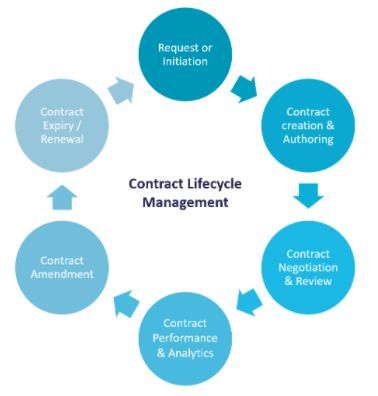Are you tired of dealing with contract-related issues that affect your operations, increase your workload, and impact your revenue? If so, you are not alone. Managing contracts can be challenging and overwhelming as it involves multiple variables and stakeholders, compliance requirements, and legal implications. That’s where Contract Lifecycle Management (CLM) comes in handy.
CLM refers to the systematic process of managing contracts, from the initiation and negotiation to the execution, monitoring, and renewal. By adopting CLM best practices, organizations can improve their contract management efficiency, reduce errors and delays, mitigate risks, and increase revenue. In this article, we’ll explore eight CLM best practices that can help you optimize your workflow, streamline operations, and maximize profit.
Define Your Contract Management Workflow
The first step to effective CLM is to define your contract management workflow. This involves identifying the steps involved in your contract lifecycle, the roles and responsibilities of stakeholders, and the tools and resources needed to manage contracts. A well-defined workflow helps you ensure consistency, compliance, and accountability in your contract management process.
Centralize Your Contract Repository
One of the primary obstacles to efficient CLM is scattered contract repositories. If your contracts are stored in various places, such as email inboxes, shared drives, or physical file cabinets, it can be challenging to track, access, and manage them. By centralizing your contract repository in a secure, cloud-based system, you can easily search, organize, and retrieve your contracts, collaborate with stakeholders, and monitor contract performance.
Standardize Your Contract Templates
Another CLM best practice is to standardize your contract templates. By creating standardized templates that reflect your organization’s preferences, policies, and legal requirements, you can save time and resources, reduce errors and inconsistencies, and ensure compliance. You can also leverage contract management software that provides pre-built templates or allows you to configure your templates.
Automate Your Contract Lifecycle
To streamline your CLM process further, consider automating your contract lifecycle. Contract management software can automate your workflows, such as approval routing, notification, and renewal reminders, and provide real-time analytics, status tracking, and audit trails. Automation can help you eliminate manual tasks, reduce risks, and increase efficiency.
Enforce Contract Visibility and Accountability
To ensure that your contracts are being followed and complied with, you need to enforce visibility and accountability. This includes establishing roles and responsibilities for contract management, implementing access controls and permissions, and providing stakeholders with visibility into contract details, status, and performance. You can also use reporting and analytics to monitor contract performance and identify risks and opportunities.
Monitor Contract Performance
Monitoring contract performance is another critical CLM best practice. By tracking key performance indicators (KPIs), such as contract compliance, revenue, and cost, you can identify trends and patterns, make data-driven decisions, and optimize your contract management process. Contract management software provides real-time analytics and reporting, which can help you track KPIs and identify areas for improvement.
Ensure Compliance with Legal and Regulatory Requirements
One of the essential aspects of CLM is compliance. Contracts must comply with legal and regulatory requirements, such as GDPR, HIPAA, or SOX, depending on your industry and location. Non-compliance can result in penalties, reputational damage, and legal disputes. By ensuring that your contracts meet these requirements, you can minimize risks and ensure business continuity.
You might find these FREE courses useful
- Legal Contracts and Agreements
- Smart Contracts
- Supplier Management
- Legal Foundations for Entrepreneurs
- Legal Aspects of Entrepreneurship
- Project Planning
Continuously Improve Your CLM Process
Finally, CLM is a continuous process that requires ongoing improvement. By soliciting feedback from stakeholders, measuring performance, and implementing best practices, you can evolve your contract management process over time. Contract management software provides insights into your contract management process, which can help you identify areas for improvement and enhance your CLM process continually.
conclusion
CLM best practices can help organizations streamline their contract management process, reduce risks, and increase profits. By defining your contract management workflow, centralizing your contract repository, standardizing your contract templates, automating your contract lifecycle, enforcing contract visibility and accountability, monitoring contract performance, ensuring compliance with legal and regulatory requirements, and continuously improving your CLM process, you can optimize your contract management process and achieve your business goals.
